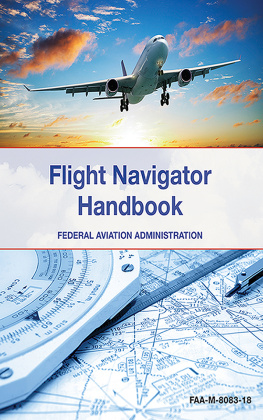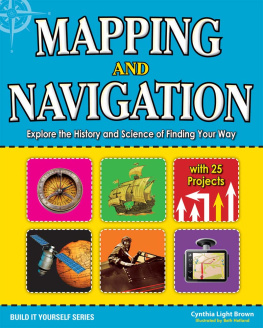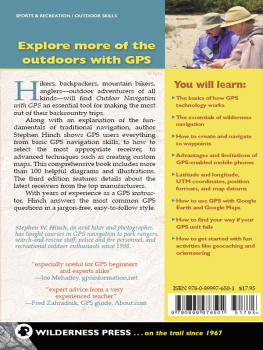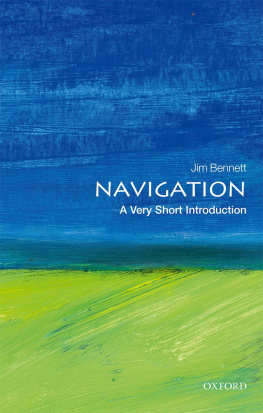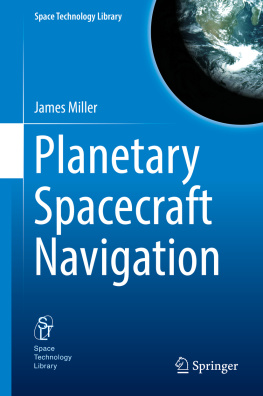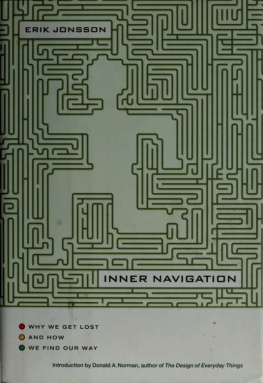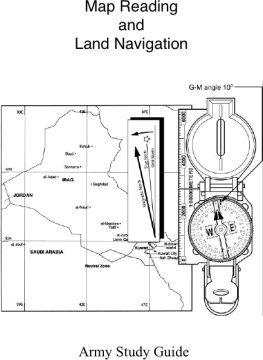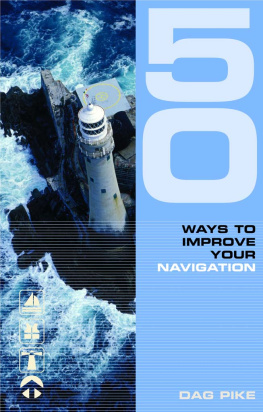The Science of Navigation
The Science
of Navigation
FROM DEAD RECKONING TO GPS
Mark Denny

2012 The Johns Hopkins University Press
All rights reserved. Published 2012
Printed in the United States of America on acid-free paper
9 8 7 6 5 4 3 2 1
The Johns Hopkins University Press
2715 North Charles Street
Baltimore, Maryland 21218-4363
www.press.jhu.edu
Library of Congress Cataloging-in-Publication Data
Denny, Mark, 1953
The science of navigation : from dead reckoning to GPS / Mark Denny.
p. cm.
Includes bibliographical references and index.
ISBN-13: 978-1-4214-0511-7 (hdbk. : alk. paper)
ISBN-13: 978-1-4214-0512-4 (pbk. : alk. paper)
ISBN-13: 978-1-4214-0560-5 (electronic)
ISBN-10: 1-4214-0511-3 (hdbk. : alk. paper)
ISBN-10: 1-4214-0512-1 (pbk. : alk. paper)
ISBN-10: 1-4214-0560-1 (electronic)
1. NavigationHistory. 2. Maps. 3. Cartography. 4. Geodesy. I. Title.
VK559.D44 2012
623.8909dc23
2011037777
A catalog record for this book is available from the British Library.
Special discounts are available for bulk purchases of this book.
For more information, please contact Special Sales at 410-516-6936 or specialsales@press.jhu.edu.
The Johns Hopkins University Press uses environmentally friendly book materials, including recycled text paper that is composed of at least 30 percent post-consumer waste, whenever possible.
Contents
Acknowledgments
Thanks to Steve, of Coastal Instrument and Supply, for permission to reproduce the inset photo of
The Science of Navigation
INTRODUCTION
Point of Departure
From rural western Canada to New York City, it didnt occur to me that the airplanes flying my wife Jane and me across the continent applied the latest in navigational technology, really an accumulation of millennia of knowledge. Nowadays, traveling over a significant fraction of the earths surface involves no great mental or physical effort on our part. We pay our fares, take our seats, and ruminate more on the inconveniences imposed by Homeland Security than on the marvels of flight or, the subject of this book, of navigation. The latter struck home on a much shorter journey, when we needed to reach a small art gallery in Brooklyn from midtown Manhattan. Perhaps it is not surprising that we were completely incapable of the feat. We were gawping up at skyscrapers instead of the more familiar red cedars of home and were overwhelmed by the bustle and vibrancy of the big city, a classic illustration of two hayseeds in from the sticks. More surprisingly, our cabbie also did not know his way around; he turned to his dashboard GPS system to flawlessly guide us.
Three thousand years ago, humans developed the ability to move long distances by seaand the need to get back home again. We as a species were no longer simply wandering aimlessly from place to place, gathering food as we went, and moving on when we had exhausted the local supply. Three thousand years ago, during the Bronze Age, we had well-established cities and ships and trading structures. At first, we tentatively felt our way along familiar coastlines. A fewI will tell some of their storiesventured farther afield and were able to find their way back home. These epic journeys formed the stuff of legends, and yet today they would take only a few hours and involve negotiating nothing more hazardous than a chicken sandwich.
Navigation can be defined as the science (perhaps initially an art) of including steering and the setting of sailsall the skills needed to get a ship from home port to destination. This book is about our three-thousand-year-long journey from navigational infancy (setting out from a harbor in a sailing craft, navigating by the Pole Star and landmarks) to maturity (setting out from Times Square in a cab, navigating by GPS). I describe not only the astounding feats of seamanship and of determination in adverse circumstances of the early explorers, sailors, and conquerors, but also the technical advances made by them, and by many others behind the scenes, who developed the science of navigation.
My intent is to provide you with an understanding of the physical principles that are needed to appreciate navigation and how they came to be understood. I hope that you will close this book with a deeper appreciation of the physical, engineering, and mathematical ideas that have contributed to developments in these fields and will see several layers beneath the surface of modern navigational techniques. In these pages I survey a large areacovering a lot of ground. Continuing the metaphor: the map I construct is large scale, so it necessarily omits much detail. Thus, for example, the fascinating, lengthy, and multifaceted story of the Great Trigonometric Survey of India is here compressed into a few pages. Another example: the well-documented and historically important survey of England is omitted entirely. If you crave details, then please consult the extensive bibliography. (Had I attempted a comprehensive coverage of all the disciplines discussed in these pages, this book would have required 10 volumes. More: 100 volumes. Under a single cover I can only explain the fundamental, overarching ideas and hope to whet your appetite.)
The first chapters encompass preliminary material we will need later on: geodesy and cartography. They set the table. These subjects, important in their own right, are the appetizers before the main course of navigation (apologies for the pun). I show you how navigation evolved and, along the way, tell the stories of many historically important explorers who employed the navigational tools and techniques I discuss.
In chronological order our explorers are the unknown Phoenicians who ventured into the southern hemisphere; two Carthaginians, Hanno and Himilco, who expanded their trading contacts beyond the Mediterranean and along the Atlantic coast; Pytheas, the Greek who ventured to the Arctic Circle; Zhang Qian, the Chinese who explored the eastern lands of Alexander the Great; the South Pacific explorers; Ibn Battuta; Bartolomeu Dias, Columbus and Vespucci, Vasco da Gama, and Magellan; Sir Francis Drake; James Cook; Nain Singh Rawat. These men cover 2,500 years of history and make their appearance in the book at just the right placevery appropriately for explorers.
When we reach the end of the book, we will find that we have been preceded by bats, dolphins, cuckoos, warblers, and other animals that evolved extremely impressive navigational skills long before humans arrived on the world stage.
There are plenty of books which detail the astonishing exploratory journeys that have been made over the centuries (many of the better books are included in the bibliography), and there are many texts aimed at students of the various fields we will touch upon here. Geodesy, cartography, and remote sensing form the technical backbone of our subject: all of these disciplines are intimately connected with navigation. There are remarkably few books, however, in which the authors seek as I do to explain the technical aspects of navigation without relying heavily upon mathematics. How to convey such technical understanding without math? Navigation is, at its core, a geometrical science, and so many of its principles can be conveyed very effectively with diagrams. I have gone to some considerable effort to create pictorial illustrations of the mathematical ideas underpinning navigation, and these diagrams along with some helpful text will take the place of pages of convoluted mathematical equations. Nitty-gritty details (of how to measure or calculate your position on the surface of the globe) are not a part of the story I will be telling, but you will learn why it all works.
Next page


